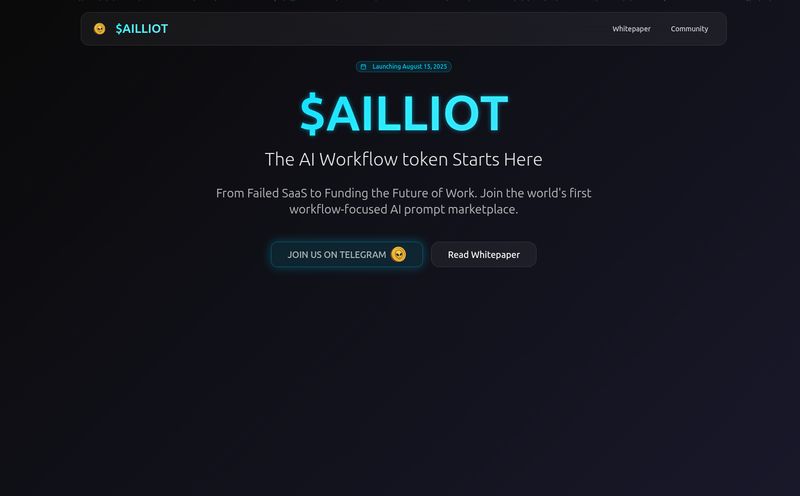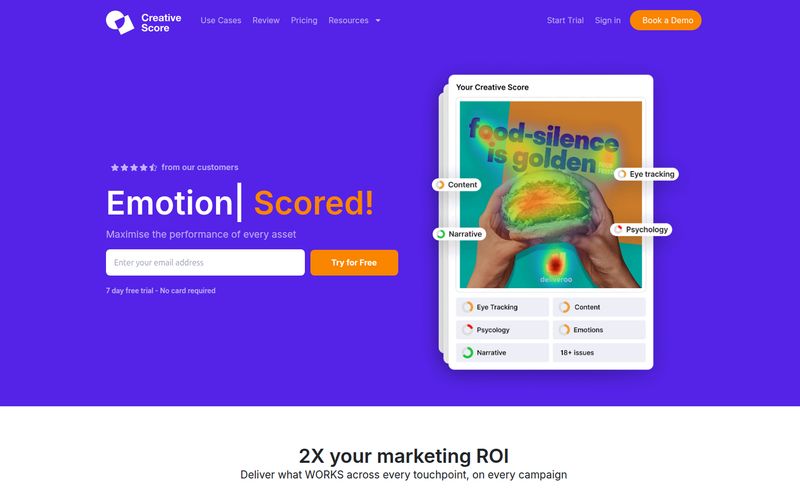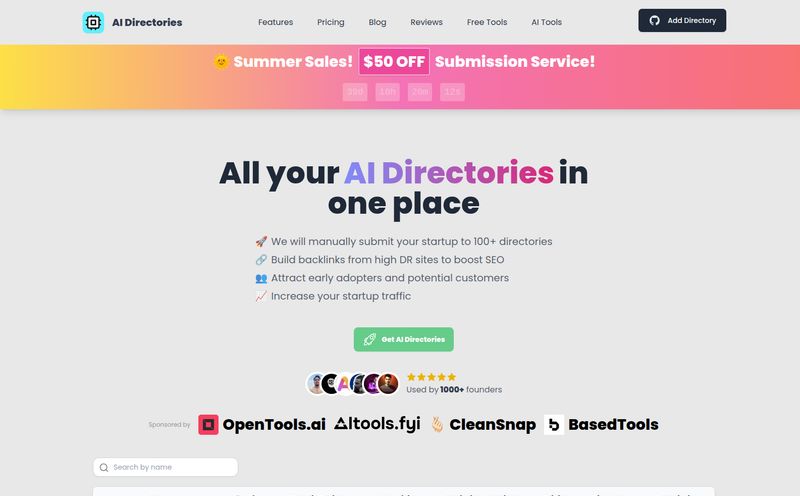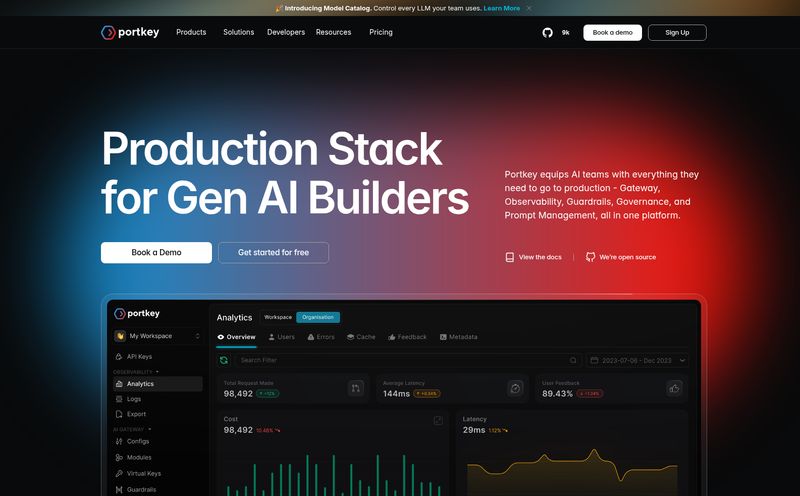We’ve all been there. You have an idea. A brilliant, earth-shattering, this-is-the-one idea. You spend months, maybe even years, pouring your soul and your savings into building it. You polish every pixel, you perfect every line of code. And then you launch.
To the sound of crickets.
It’s a pain I know all too well. The single biggest reason most new products fail isn’t a lack of funding or a bad marketing plan; it’s because they built something nobody actually wanted. So when a tool comes along promising to help you validate ideas 10x faster, my battle-worn, cynical marketing heart skips a beat. That tool is ProductBlueprint.ai, and I’ve been digging into what it’s all about.
What is ProductBlueprint.ai, Really?
Strip away the buzzwords, and ProductBlueprint.ai is an AI platform designed to stop you from building the wrong thing. It’s a validation engine. Instead of the old “build it and they will come” prayer, this platform gives you a framework to test your assumptions, gather real customer insights, and get a solid read on product-market fit (PMF) in days, not months.
It’s aimed at a pretty wide audience—from established brands and content creators to, interestingly, other LLM platforms. The core idea is to capture what they call “in-moment intent” for those big, high-consideration purchases. It’s not for selling t-shirts; it’s for figuring out if your ambitious new software, course, or service has legs before you bet the farm on it.
The Secret Sauce: Amazon's PR/FAQ Method on Steroids
Okay, here’s the part that really got my attention. The platform adapts Amazon’s legendary internal PR/FAQ method. If you haven't heard of it, it's a game-changer. Before Amazon engineers write a single line of code, the product manager has to write a future-dated press release (the PR) announcing the finished product. They also have to write a detailed Frequently Asked Questions (FAQ) document that anticipates every tough question customers, stakeholders, and journalists might ask.
Why? Because it forces absolute clarity. If you can’t write a compelling press release, your idea isn’t ready. If you can’t answer the tough questions in the FAQ, you haven't thought it through. It’s a simple, brutal, and effective way to define a product. I once tried to implement this with a team, and the amount of groaning was epic, but the final product was so much better for it.
ProductBlueprint.ai seems to take this philosophy and wrap it in a modern, AI-powered workflow. It helps you generate these assets and then, crucially, get them in front of real people to see how they react. It’s like having a crystal ball for your product roadmap.
A Peek Under the Hood at its Core Features
So how does it actually work? From what I can gather, it’s built around four main pillars.

Visit ProductBlueprint.ai
Product & Offer Management
This is your command center. It’s where you define the product idea you’re testing. You can craft different offers, test price points, and tweak the messaging that forms the basis of your “press release.” It’s about creating a tangible concept that you can put in front of an audience, even if the product itself is just a sparkle in your eye.
Lead Flow Orchestration
This sounds corporate, but it’s basically about capturing signals of interest. When someone reads your concept and says, “Yes, I want that!”—what happens next? This feature helps you manage that flow, whether it’s collecting emails for a waitlist, scheduling demos for a non-existent product, or gathering survey responses. It’s about turning vague interest into measurable data.
Creator Content Distribution
This is a clever, modern twist on the PR/FAQ. Instead of just showing your idea to a focus group, the platform helps you distribute it through content creators. Imagine an influencer in your niche sharing your “press release” with their audience. The feedback you’d get would be raw, honest, and incredibly valuable. It’s a great way to gauge genuine excitement and find your initial tribe of users.
Real-Time Analytics
This is where the rubber meets the road. All that data from your lead flows and creator content feeds into a real-time analytics dashboard. You're not just looking at clicks and impressions; you're looking for signs of genuine demand. How many people signed up for the waitlist at a specific price point? What questions did the creator’s audience ask? This is the feedback loop that helps you iterate on your idea or, just as importantly, decide to kill it before it wastes any more of your time.
The Good, The Bad, and The... Missing Price Tag
No tool is perfect, right? From my analysis, ProductBlueprint.ai has some serious strengths, but also a few things to keep in mind.
On the plus side, the speed is undeniable. The potential to slash the PMF validation process is huge. For any startup or product team, time is the one resource you can never get back. Mitigating risk is the other big win. Every failed product is a massive, expensive lesson. This tool is designed to give you those lessons for a fraction of the cost. And for the tech-savvy teams, the API-first approach is great, allowing you to plug its validation power into your existing systems.
However, there are a few potential hiccups. The reliance on APIs for certain integrations means this might not be a simple out-of-the-box solution for a non-technical founder. You might need someone with a bit of dev knowledge to get the most out of it. And like any AI tool, its' effectiveness is entirely dependent on the quality of your inputs. If you write a lazy, uninspired PR/FAQ, you’ll get lazy, uninspired results. Garbage in, garbage out.
And then there's the pricing. Or the lack thereof. When I went searching for a pricing page, I was greeted with a big, bold “Not Found” error. A bit of an oopsie on their part, perhaps? But it also tells a story. This isn't likely a cheap $29/month SaaS tool. The lack of public pricing almost always means it’s an enterprise-level solution where the cost depends on your needs. You’re going to have to talk to a salesperson, which isn’t my favorite activity, but for the right company, the ROI could make it a no-brainer.
So, Who Is This Actually For?
After looking at the features and the positioning, this isn't for the hobbyist with a weekend project. ProductBlueprint.ai is a serious tool for people with serious ambitions.
- Product Managers at established companies launching a new vertical.
- Well-funded Startups that need to find PMF before their runway runs out.
- Marketing Teams tasked with go-to-market strategy for unproven concepts.
- Ambitious Creators who are ready to move from content to building a scalable product for their audience.
The mention of “For LLM Platforms” on their site is also fascinating. It suggests they might be white-labeling their validation engine to other AI companies, which is a pretty meta and powerful business model.
Your Questions, Answered
What is ProductBlueprint.ai in a nutshell?
It's an AI-powered platform that helps you test product ideas quickly using a method inspired by Amazon. The goal is to find out if people will buy your product before you actually build it, saving you time and money.
How does it use the Amazon PR/FAQ method?
It provides a structured workflow to help you create a forward-looking press release (PR) and a detailed FAQ document for your unbuilt product. It then helps you distribute these materials to a real audience to gauge their reaction and gather feedback.
Is ProductBlueprint.ai suitable for solo founders?
It depends. If the founder is non-technical, they might find the API integrations challenging. It seems better suited for teams or founders who are comfortable with a more technical, data-driven approach and likely have a budget for a premium tool.
What kind of analytics does it provide?
The analytics are focused on measuring genuine customer intent, not just vanity metrics. This includes things like waitlist sign-ups, demo requests, and qualitative feedback gathered from audiences, all in real-time.
Do I need to be a developer to use it?
Probably not to use the main dashboard for managing offers and viewing analytics. However, to take full advantage of its API-first design and integrate it into other systems, some developer expertise would be very helpful.
How much does ProductBlueprint.ai cost?
That’s the million-dollar question! There is no public pricing available on their website, which strongly suggests a custom or enterprise pricing model. You'll have to contact them for a quote.
My Final Take on ProductBlueprint.ai
I see dozens of new tools every month, and most are just slight variations of something that already exists. This one feels different. The philosophy behind it—validating before you build—is something I preach constantly. Product-market fit is the holy grail, and any tool that makes that quest less painful and expensive is worth paying attention to.
While the mysterious pricing and the need for some technical know-how might be hurdles for some, the core concept is rock-solid. In a world where building things is easier than ever, knowing what to build has become the real differentiator. Forgetting to check that can lead to that awful sound of crickets on launch day.
ProductBlueprint.ai might just be the hearing aid that lets you listen to the market first.



